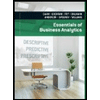Please Download EURUSD spot exchange rate data from Yahoo Finance by using ‘yfinance’ module or use FRED database (from website or API connection). Data period: 2010-Jan to 2024-Jan; Data frequency: WeeklyStep1: Use moving-window data samples to fit ARIMA(p,d,q) model to the EURUSD time series as follows:Please set your first sub-sample as the first 4-year of the data starting from 2010-Jan. Fit ARIMA to that subsample. Create the FX forecast for the subsequent 25 weeks (roughly 6 months). Calculate RMSE measure of your forecasts. Then, repeat the same process over sequential data windows moving 6-monthly steps. For example, your Sub-Sample 1 to fit the model (Training Sample) will be 2010-Week 1 to the end of 2013-Dec. (i.e. 4 years). You will generate a forecast for 2014-Jan to 2014-Jun period by using the ARIMA fitted to the Training Sample, then calculate RMSE and record it. Then, in the second step, Sub-Sample 2 Training Data will cover the 2010-Jun to 2014-Jun window, and the forecast will be calculated for the consecutive 6 months upto 2014-Dec, and so on. You can formulate this with a FOR-LOOP. Run the repeated forecasting and RMSE numbers. Plot a chart of RMSE values for each of the training-forecasting periods up to the end of the sample. Step 2: Repeat Step 1 with a Naïve forecast based on the Average value. (i.e. training sample mean). Plot the RMSE values. Step 3: Interpret and discuss your results. Which method works better? Which one would you recommend? Why?
Please Download EURUSD spot exchange rate data from Yahoo Finance by using ‘yfinance’ module or use FRED database (from website or API connection).
Data period: 2010-Jan to 2024-Jan; Data frequency: Weekly
Step1: Use moving-window data samples to fit ARIMA(p,d,q) model to the EURUSD time series as follows:
Please set your first sub-sample as the first 4-year of the data starting from 2010-Jan. Fit ARIMA to that subsample. Create the FX forecast for the subsequent 25 weeks (roughly 6 months). Calculate RMSE measure of your forecasts. Then, repeat the same process over sequential data windows moving 6-monthly steps.
For example, your Sub-Sample 1 to fit the model (Training Sample) will be 2010-Week 1 to the end of 2013-Dec. (i.e. 4 years). You will generate a forecast for 2014-Jan to 2014-Jun period by using the ARIMA fitted to the Training Sample, then calculate RMSE and record it. Then, in the second step, Sub-Sample 2 Training Data will cover the 2010-Jun to 2014-Jun window, and the forecast will be calculated for the consecutive 6 months upto 2014-Dec, and so on. You can formulate this with a FOR-LOOP.
Run the repeated
Step 2: Repeat Step 1 with a Naïve forecast based on the Average value. (i.e. training sample mean). Plot the RMSE values.
Step 3: Interpret and discuss your results. Which method works better? Which one would you recommend? Why?
Step by step
Solved in 2 steps with 3 images









